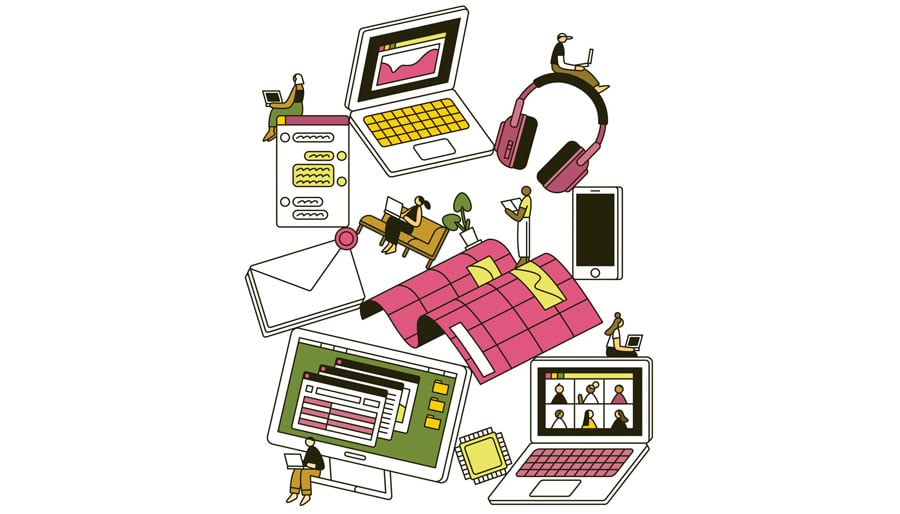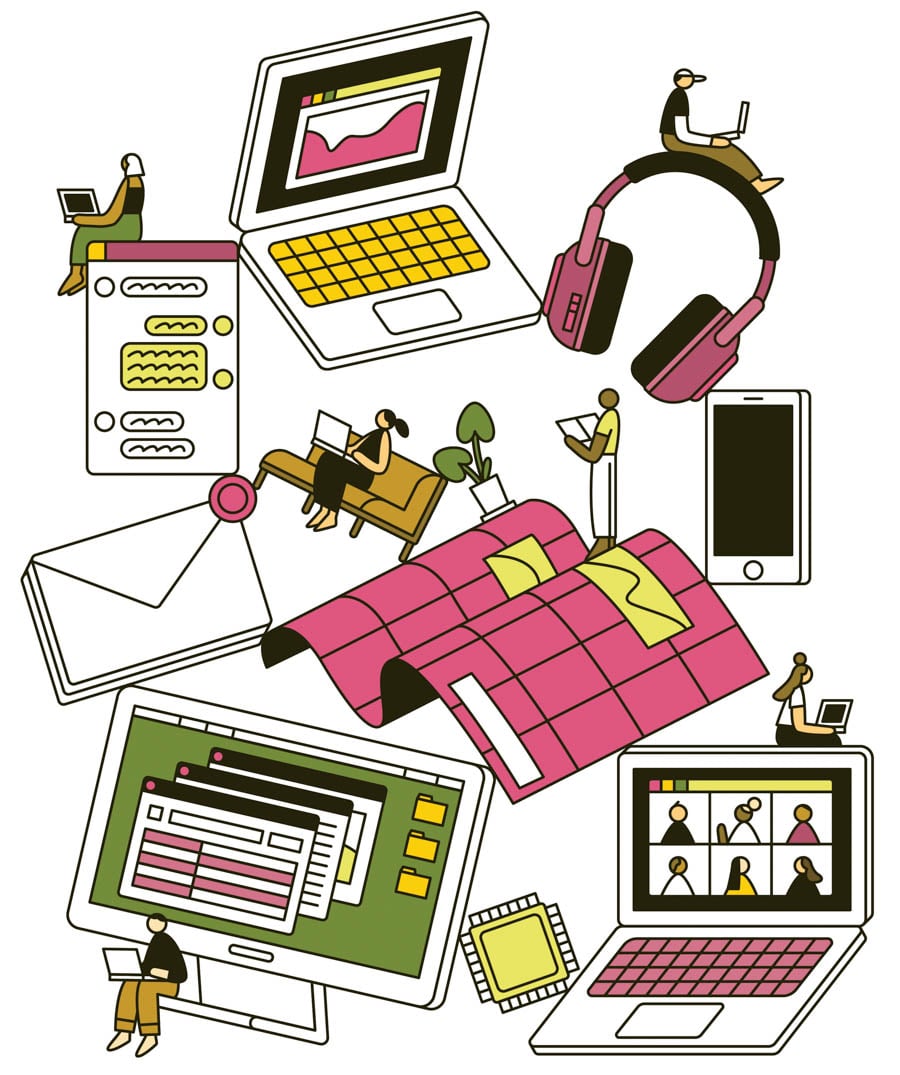
June 11, 2020
Will the Pandemic Improve Remote Work?
Before the pandemic, telework— for all its virtues—could be messy, ergonomically awkward, and emotionally challenging. What’s changed now?

For many office-goers at the moment, work is happening at home and online. But eventually, we will agree on guidelines, establish protocols, and find a vaccine for the novel coronavirus. Then the office will make a comeback, as will the coworking space and the café. We will also find that work can happen anywhere and be supported in any way we want—if we make the right decisions now. In our June issue, Metropolis tracked five concepts—loneliness, public health, neurodiversity, remote work, and experience management—that anyone involved in the design of workplaces needs to start taking seriously. Paying attention to them won’t take us back to business as usual. It will inspire us to do it better than it was done before.
___
Companies that survive this recent shove into telework want its benefits—including reduced operating costs—to continue. That’s why Facebook, Twitter, Google, and automaker Groupe PSA are among a growing number of businesses announcing plans to embrace remote work permanently. It doesn’t hurt that numerous studies since the 1970s have found that freedom to work remotely can improve productivity, creativity, and morale. Now organizational strategists and psychologists hope that employers, armed with lessons from this shut-down, will invest in more support for remote workers. Consider a few aspects of the new work-from-home (WFH) landscape they think could emerge.
Extreme Personalization
Individual control over work-station features is a trend that could be adapted and intensified for users’ homes (think height-adjustable desks and partitions). “Setups can’t just be exported. Employers will have to let employees guide them,” says Ravi Gajendran, a researcher and professor of management at Florida International University. Steps could involve establishing guiding principles for WFH environments such as a schematic for kitchen-table setups and a budget for space design. For more individualized control, Alan Hedge, professor emeritus at Cornell University, has developed the Home Office Ergonomics app, available for free at the App Store and Google Play.
Family Freedom
IBM CEO Arvind Krishna recently assured workers that they won’t be penalized if kids interrupt video calls—an extraordinary acknowledgment of the strain parents face juggling work and family, says Brigid Schulte, author of Overwhelmed: Work, Love, and Play When No One Has the Time: “Until the pandemic, most people hadn’t worked in the same space as their spouse or partner. Women were told they couldn’t do it.” A 2017 study by Owl Labs found that caregiving was a key reason people chose telework, so accommodating families will be important even after offices reopen. “Firms should consider the value proposition,” Schulte says, “then the old biases will lift.”
A Distributed Workforce
Facebook is looking at normalizing employees’ ability to work from anywhere, but with a salary adjustment down-ward for those who leave the San Francisco Bay Area. “Telework was viewed as a favor to employees. Now it is an arrangement in which workers help companies manage risk and keep businesses running at reduced operating costs,” says Gajendran, adding that he expects more employers to adopt a distributed workforce, with staff dispersed geographically.
Permeable Boundaries
Daily management of distractions remains a sticky, self-guided affair. According to Timothy Golden, an industrial and organizational psychologist and professor at Rensselaer Polytechnic Institute, clashes between work and home life are inevitable: “In an office, you’re mentally and physically separated from family. At home, you can presumably manage workflow better, as colleagues are not stopping by your desk. But my research found family interferes more with work in a home setting.” His advice: Try staggering your work schedule and those of family members for different times of day. Strike an arrangement.
You may also enjoy “The Latest Workplace Design Initiative? Neurodiversity”
Register here for Metropolis Webinars
Connect with experts and design leaders on the most important conversations of the day.
Recent Viewpoints
Viewpoints
Sustainability News Updates for Q2 2025





